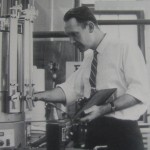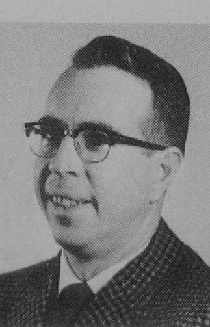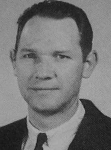 Genetics work by Associate Professor Casey Huckins has been featured by the International Association of Great Lakes Research. It suggests that some individuals in the stream-dwelling trout population of the Salmon Trout River may be hybrids of brook trout and the migratory coaster brook trout. See Trout.
Genetics work by Associate Professor Casey Huckins has been featured by the International Association of Great Lakes Research. It suggests that some individuals in the stream-dwelling trout population of the Salmon Trout River may be hybrids of brook trout and the migratory coaster brook trout. See Trout.
 About 250,000 children in the United States have high levels of lead in their systems, say the Centers for Disease Control. Children under the age of 6 are especially vulnerable to lead poisoning, which can severely affect mental and physical development. At very high levels, lead poisoning can be fatal.
About 250,000 children in the United States have high levels of lead in their systems, say the Centers for Disease Control. Children under the age of 6 are especially vulnerable to lead poisoning, which can severely affect mental and physical development. At very high levels, lead poisoning can be fatal.
- View the Michigan Tech News story
 Michigan Tech celebrated World Water Day on Thursday, March 22, with a poster session, a guest lecture and a reception.
Michigan Tech celebrated World Water Day on Thursday, March 22, with a poster session, a guest lecture and a reception.
Lana Pollack, U.S. delegate of the International Joint Commission delivered the World Water Day Lecture: “Critical Issues for the Great Lakes.” The program is Co-sponsored by CWS and the Visiting Women & Minority Lecture Series. Lana Pollack, chair of the US Section of the International Joint Commission, discussed threats to the health of the Great Lakes and how research data-based policy-making can protect these unique natural resources. The International Joint Commission is an independent, binational organization that works to prevent and resolve boundary waters disputes for the common good of the US and Canada. Lana Pollack – bio
by James D. Spain (Written Spring 2012)

In 1969, while we were picking out the equipment for our new Chemistry-Biological Science building, one of the items that we chose was an Olivetti Programma-101. This was a programmable calculator that could be used for carrying out repetitive calculations, statistical analysis, and data analysis in general. We had little difficulty agreeing that it was something the department needed, as all recognized that this was the direction of the future. When it arrived, perhaps a year before we went into the new building, it was moved into Spain’s office to enable him to learn how to use it. It turned out to be a large, heavy piece of equipment, at least twice as big as an IBM typewriter. It could be programmed by typing in a series of two-character commands, such as A^, B+ and C<. These commands caused numbers to be moved from storage “registers” (B, C, D or E) to the accumulator (A), where one would carry out some numerical operation based on the contents of some other register, then exchange the result with what was in one of the other registers. The memory would hold 32 such commands. These commands and the contents of the registers could be stored on an 8×2-inch card with magnetic backing. The output consisted of a paper tape printout, which could list the program, print input, or data output. Since it behaved somewhat like a computer, it was called a “microcomputer”. It also might have been called a desktop computer, however that term was not prevalent at the time.
by James D. Spain (Written Spring 2012)

In 1968, the department began a study of Lake Superior and the Keweenaw Waterway, as it was felt that Michigan Tech had great potential in this area, being located very near to the geographical center of the big lake. Despite this fact, little significant research in either biology or chemistry of this great resource had been done at Michigan Tech. Otherwise, Lake Superior research was being carried on at the University of Minnesota-Duluth (UMD), and to a small extent by the Universities of Michigan and Wisconsin. So, it was obvious that great potential existed in a very interesting area for research.
 by Jack C. Holland
by Jack C. Holland
Written in Winter 2011-12
Clinical Laboratory science began to develop in the 1920s and 1930s. Most of the work was done by pathologists or physicians in private office practice. Eventually the office nurse would find this to be part of her duties. In the 1930s the degree of Medical Technology was instituted to separate the analytical needs of the profession from the hands on nursing. World War II had a profound effect the whole medical field; money was made available for better medical instrumentation and all medical training was expanded. At the end of the war in 1946 hospitals were developing large, well equipped pathology laboratories and the new wartime doctors were trained to use them. The new degree in Medical Technology was appealing to both men and women who found it satisfying to help people with scientific analysis rather than the hands on work done by other medical professionals.

by James D. Spain
Written Spring 2012
After some 40 years as strictly a mining school, the Board of Control of Michigan College of Mines, in 1926, decided to add several new degree programs: B.S. in Chemistry, B.S. in Biology, and B.S. in General Engineering. They also decided to change the name of the college to Michigan College of Mining and Technology. Most of these plans were accepted by the State Legislature, but the formation of a biology department was to wait an additional 36 years before fruition.
![[image R Brown]](https://blogs.mtu.edu/biological/files/2012/08/r_brown.png)
by Robert T. Brown
Written about 1973
At the October 13, 1961 meeting of the Board of Control, it was moved, seconded and passed unanimously, that a Department of Biological Sciences be created as of July 1, 1962, utilizing existing staff members and facilities.
With this action, Robert T. Brown and Kenneth J. Kraft from the Department of Forestry, James D. Spain and Ira H. Horton from the Department of Chemistry and Chemical Engineering, and Robert A. Janke from the Department of Physics were joined into the new department. Brown, Kraft and Janke shared a large office in Hubbell School. Horton continued to occupy his office and laboratory in Koenig Hall.
 In 2012 the Department of Biological Sciences celebrates its Fiftieth Anniversary
In 2012 the Department of Biological Sciences celebrates its Fiftieth Anniversary
In October 1961, the Michigan Tech Board of Control approved the formation of a Department of Biological Sciences. The Department began independent operations on July 1, 1962, with five faculty drawn from other departments at Michigan Tech.
The narratives assembled and linked from this page describe some of the history of the department.
- Robert T. Brown, one of the original members of the department, wrote in 1973 a draft of the history of the department:
Link to early history of the department (Brown). - James D. Spain, the founding department head of the department, has recently written an account of its establishment and first eight years:
Link to early departmental history (Spain). - Jack C. Holland has written a brief narrative about the beginning of the department’s activities in Medical Technology- Clinical Lab Science.
Link to account of development of clinical lab science (Holland) - Spain has written an extended narrative describing the beginning of the department’s research program in aquatic ecology in 1968, when he returned to doing research after his term as department head.
Link to early aquatic research activities (Spain) - Spain has also contributed a personal narrative of the beginnings of the departmental program in computer simulation of biological phenomena
Link to early activities on computer simulation (Spain)
 Many of our alums may not remember, but the Department of Biological Sciences began at MTU in 1962, meaning that 2012 is our official 50 year anniversary. Several Emeriti and Current Faculty (Dr. James Spain, Dr. Robert Keen, Dr. Thomas Snyder, and others) are putting together a brief history of the Department, where it was, has been, and is currently going. We (myself, Patty Asselin, Jeff Lewin, Emily Betterly and Alice Soldan, among others) are working on festivities to celebrate the 50th anniversary at the Alumni Gathering scheduled for August 2-4, 2012. We’ve already developed several activities that we hope will be of interest to alums from Biological Sciences for those dates. Please stay-tuned, more information will be coming out later, with individual mailings and the Spring 2012 newsletter.
Many of our alums may not remember, but the Department of Biological Sciences began at MTU in 1962, meaning that 2012 is our official 50 year anniversary. Several Emeriti and Current Faculty (Dr. James Spain, Dr. Robert Keen, Dr. Thomas Snyder, and others) are putting together a brief history of the Department, where it was, has been, and is currently going. We (myself, Patty Asselin, Jeff Lewin, Emily Betterly and Alice Soldan, among others) are working on festivities to celebrate the 50th anniversary at the Alumni Gathering scheduled for August 2-4, 2012. We’ve already developed several activities that we hope will be of interest to alums from Biological Sciences for those dates. Please stay-tuned, more information will be coming out later, with individual mailings and the Spring 2012 newsletter.